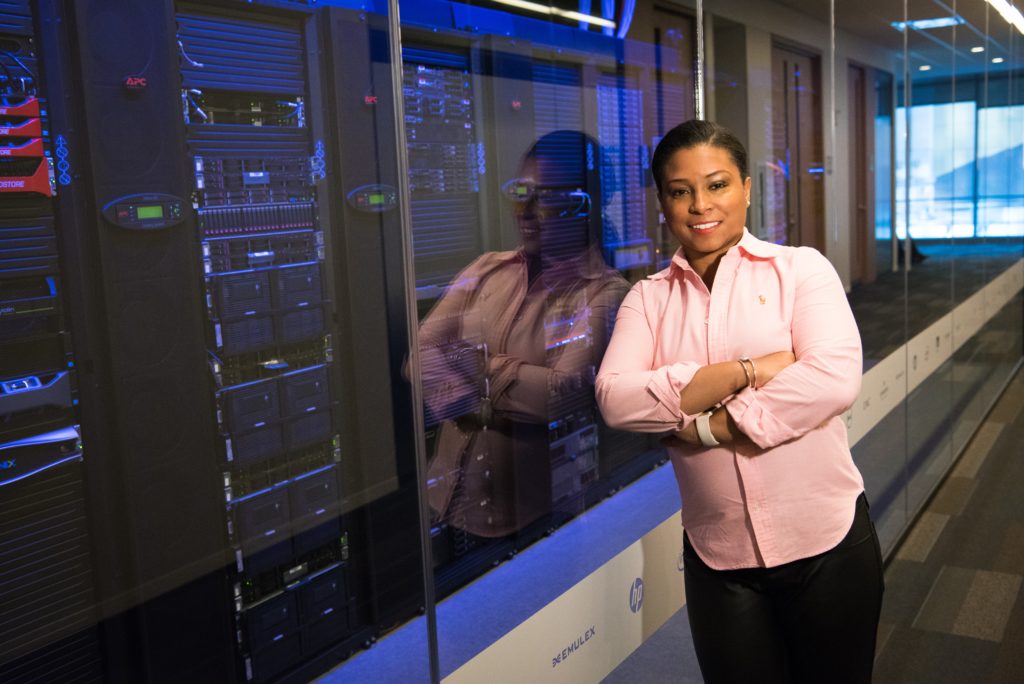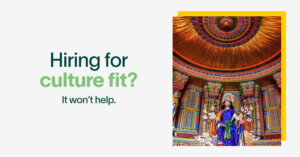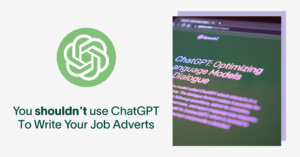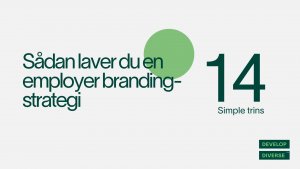If you are here, chances are you are familiar with our software tool, useful for unconscious bias awareness and detection/replacement of non-inclusive language in job ads. We are thrilled to see that it is being received excitedly by many, like the initiator of our collaboration at Aalborg University. We also welcome the conversation ensuing around the topic, such as the interest in the science behind from users and journalists, or the debate about its necessity by professionals and students, as it gives us all a chance to engage in a productive and educational discussion. In that spirit, we would like to address the curiosity about the reasoning behind our tool, and we are happy to elaborate on the vision, the science of our app and the results it brings to companies.
Massive tech talent shortage in Denmark
Our vision is to normalise diversity by building an inclusive culture through inclusive communication. Our goal, today, is to enable companies to attract and retain diverse and qualified talent. Why is this relevant today? Studies show that companies are struggling with getting enough talented applicants. In particular, Denmark will be missing 19.000 IT specialists in 2030, thus costing them huge losses in GDP. Today, IT companies are spending a collective €14 billion extra in hiring costs a year due to the lack of available talent. All the while, 75% of IT-educated women and 90% of IT-educated people from an underrepresented ethnic background do not pursue a tech position.
In addition, employee turnover is between 2 to 3.5 times higher when it comes to these groups compared to the represented population. This is not only costing economic loss for these companies, but it is also hindering innovation through failing to attract a diverse workforce. McKinsey & Co. have demonstrated that diverse and inclusive workplaces are more innovative, perform significantly better, have a better chance to be profitable and have higher employee engagement and retention.
Inclusive language brings you 3 times more qualified applicants
Building a diverse and inclusive workforce starts with more inclusive hiring. But can inclusive language actually make a difference? We have seen that it can. Our customers have experienced a great increase in the number of applicants and especially of diverse qualified applicants when making their job ads inclusive.
In particular, Amazon has got 3 times more qualified applicants and closed their gender gap in their qualified pool by getting both more qualified women and more qualified men from more diverse ethnic backgrounds. Furthermore, TDC Group has got 2 times more female applicants, resulting in a gender-balanced candidate pool.
So, yes, inclusive language can increase your qualified applicant pool three times and can help close the gender gap in your hiring. Thus, demonstrating the power of language.

Women are ambitious and men are caring
How can inclusive language have such an enormous effect? It’s quite simple: inclusive language doesn’t discourage talent due to their social groups, such as gender, age or ethnicity. Quite the opposite, actually. It increases people’s feeling of belonging to that workplace and their appeal to work for that company. Inclusive language doesn’t carry the connotation of societal stereotypes, which unfortunately are still deeply and often covertly rooted in our society and affect us on an unconscious level. When it comes to language, it has been scientifically demonstrated, that agentic language (e.g. ambitious, competitive, bold) and communal language (e.g. caring, compassionate, humble) discourage people differently depending on the gender of the reader.
For example, if a job description carries too much agentic or communal language, it can stop a woman from pursuing a leadership position, and it can also stop a man from becoming a kindergarten teacher. According to these researchers, this happens because, even though both women and men have agentic and communal traits, meaning that both are ambitious and caring, they do not feel represented by the same traits equally. This is mainly caused by the internalized stereotypes and beliefs they picked up from society during their childhood and adulthood, and by the backlash they experience when embodying counter stereotypic traits.

And it goes beyond that, still. New evidence suggests that a focus on agentic and communal values doesn’t only affect people according to their gender, but also according to other social groups they may belong to, such as ethnicity and age. Therefore, if our purpose is to attract and retain more diverse and qualified applicants, we need to start using inclusive language.
Behavioural change is triggered when we move from unconscious action to conscious thinking. Solutions like our DD Scan, help us become conscious of our unconscious bias so we can change our behaviour.
Science instead of personal feelings
The diversity and linguistic specialists of Develop Diverse have been working to collect and further validate the scientific research that has been so carefully compiled over the past decade. Our mission is to make these principles accessible to companies and individuals through our software and to help them make an informed decision about the language they choose to use in their recruitment. We do this by marking the words that can have a subconscious effect on potential applicants and inform the user of the consequence of using that word – then the user decides whether or not they wish to go for one of the more inclusive alternatives we offer. It is really more like a spell-checker, except instead for standard grammar, it scans your text for non-inclusive language.
So, the question is, shall we use technology to accelerate equality in our communities, or shall we leave the space to unconscious stereotypes? Let’s not wait 100 more years for a mentality change, let’s use technology. You can listen to our Founder’s TEDx talk here and learn more about our software tool here.





